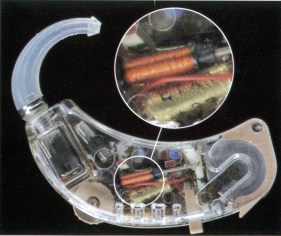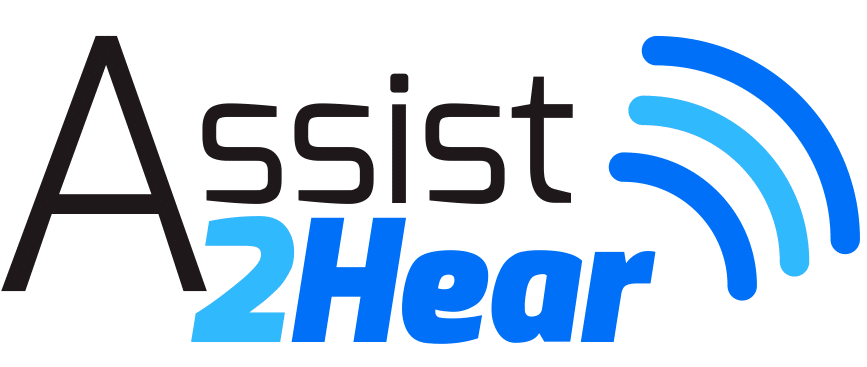Frequently Asked Questions
T-coils have many names – T-switch, T-coil, audio coil or telephone coil. How does a T-coil work in a hearing aid/cochlear implant? It effectively turns the hearing aid or cochlear implant into your own personal sound system, allowing it to communicate directly to ALDs/PLDs, FM or infrared systems, telephones and loop systems either automatically or by the flip of a switch. Very simply, T-coils are little coils of copper wire mounted inside your hearing aids, which act personalized, wireless loudspeakers. When used with devices mentioned above, T-coils help block out the frustrating background noise so you only hear what comes through the device you are listening to such as the TV, audio/MP3 player, etc. One technology gaining acceptance throughout the U.S. is the induction loop. An induction loop simply creates a magnetic field which is picked up by the T-coil, allowing T-coil users the ability to hear in church, auditoriums, meeting rooms, etc. with only their T-coil turned on. This technology negates the need for headphones typically provided in these environments and users rave about the quality of the sound. 
It is estimated that about 70-80 percent of hearing aids in the U.S. have T-coils. Most of the newer hearing aids are being equipped with T-coils. However, the very small hearing aids that go all the way in the canal do not typically have room for the T-coil, although technology for smaller T-coils is catching up and it is expected that these will one day be able to accommodate T-coils. Certainly demand will play a part in this technology. Bluetooth technology is being installed in some new hearing aids. The Bluetooth technology is short range and is great for telephone and TV but still does not offer help in larger venues. Some Bluetooth streamers have a t-coil and will work in the loop.
Many people do not know if their hearing aids have T-coils. Check with your audiologist to make sure they are installed, activated and set for your personal needs. We find that many t-coils are set too low and need to be adjusted to a higher volume, or the orientation of the coil needs to be changed to get the full benefit from the hearing loop. It is important to have a manual button for the t-coil. Most Auto-coils will not be activated by the loop so be sure you ask for a MANUAL T-coil setting. Another popular option is an MT setting which allows a small amount of the hearing aid’s microphone in the mix so room sounds such as someone speaking next to you can be heard. These are personal choices which the audiologist can help with.
NOTE: Cochlear brand implants do not currently have a vertical t-coil which affects the experience in the loop. However, Cochlear has come out with a Loop Booster accessory to help their clients hear better in looped venues.
Hearing loss has been termed the “invisible” disability – makes sense because we cannot see hearing loss. While hearing aids greatly improve hearing, they certainly are not a cure for hearing loss, kind of like eyeglasses are not a cure for bad eyesight! Many are disappointed and frustrated that their hearing aids do not work in all environments. Noisy environments such as auditoriums and restaurants are of particular note. Hearing aids work best when the speaker is 3-6 feet away in a relatively quiet environment. Since the hearing aid microphones are in or on your ears, they pick up all sound and don’t effectively discriminate voices from background noise. Digital hearing aids are constantly improving but still fall short in these environments. Assistive Listening Devices (ALDs), also known as Personal Listening Devices (PLDs) can help the hearing aids hear better in certain environments such as auditoriums, classrooms, meeting rooms, workplaces and restaurants. These devices work by placing the microphone closer to the speaker’s mouth and then transmit the sound directly to your T-coil-equipped hearing aid, which is adjusted for your specific hearing loss, or through headphones or earphones/earbuds for those not wearing hearing aids. These devices can also help keep peace in the family by allowing the TV volume to remain at “normal” levels while amplifying the volume for the individual with TV listening hearing loss, with or without a hearing aid. Assistive Listening Devices are a cost effective solution to many hearing issues. The ALDs generally work very well for those that don’t mind carrying a little transmitter/receiver. A small price for being able to hear in many environments! Be sure to discuss how ALDs can supplement the effectiveness of your hearing aids with your hearing professional.
Assistive Listening Devices (ALDs), also known as Personal Listening Devices (PLDs), can be an alternative to hearing aids for those with mild hearing loss or that cannot or will not pay the price for hearing aids. However, ALDs can also enhance the hearing aids by helping them hear better in different environments. Assistive Listening Devices can work with the T-coils in hearing aids to help avoid aggravating background noise. Products for TV, audio (music and MP3s), phones and public places are available with earphones/earbuds and headphones for use without hearing aids or with neck loops for use with T-coils hearing aids.
